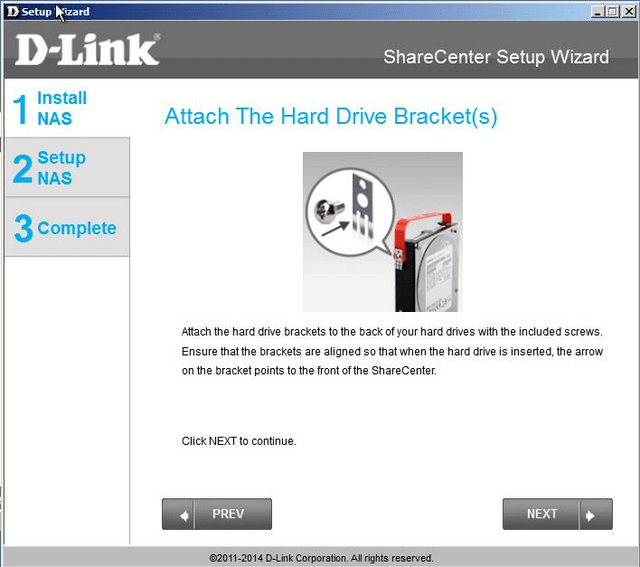D-link Easy Setup Wizard
• on Why is the D-Link mydlink portal not working with Firefox 52 (and above)? Hello, Firefox 52 is 1 year and a half old, it is a real pain to • on Why my Google Chrome browser cannot use mydlink.com Same question here, it is a shame. Looks like dlink is outsourcin • on D-Link DAP-1320 Wi-Fi Range Extender Wireless Setup Wizard Dial our toll free number 1-866-606-3055 if you are facing any pr • on D-Link DKVM series KVM switch hotkeys Description Any Buddy Help me to reset my DLINK KVM 440 8-Port Switch. It dis • on D-Link Boxee Add Thousands of TV Shows and Movies Streaming From Netflix in Canada to the Boxee Box I have two issues that need to be resovled: 1. Netflix will not l. This FAQ is for the D-Link DNS-321,, DNS-343, or DNS-726-4 Storages.
( ) allows remote administration of the unit or FTP access using a domain name in situations where a static IP address is not available. Each time a new dynamic IP address is pulled, the the Unit updates the IP address with the service provider. Register with one of the following DDNS providers: • • Write down the URL and login information you obtained after registering with one of the above DDNS providers.
Step 2: Log into the web-based configuration of the NAS or NVR. Step 3: Click the Setup or Tools tab and then click or DDNS to the left. Step 4: Click the Enable DDNS checkbox. Step 5: Select the provider that you registered with from the drop-down list next to Server Address. Step 6: Using the information you obtained in Step 1 enter the domain name that you created (i.e. Mynas.dyndns.org) in the field by Host Name.
Welcome To The D-link Easy Setup Wizard

This wizard is designed to assist you in your wireless network setup. On your wireless client adapters so they can still connect to the D-Link Router. Network Setup Wizard and the router will guide you through a few simple steps to get your.
D-link Easy Setup Wizard Dir-605l
Enter your login information for the account in the Username/Key, Password/Key, and verify Password/Key fields. Step 7: Click Save Settings to save the new settings. Note: After this is set up, you use the domain name that you registered to access the NAS or NVR remotely. For example, if the domain name that you registered is mynas.dyndns.org, then you would type in the address bar of your internet browser to access the camera remotely. • Note: It is important to ensure that any of the printers manufacturer-¦s drivers are already installed on any computer you want to print from. Step 1: To add a printer,click Start and select Printers and Faxes (You can also find Printers and Faxes from the Control Panel) Step 2: Select Add a printer. Step 3: The Add Printer Wizard will launch.
Click Next to continue. Step 4: Select A network printer, or a printer attached to another computer. Click Next to continue. Step 5: Select Browse for printer and select Next. Step 6: Double click on from the shared Printers list to expand the tree.
D-link Easy Setup Wizard
Step 7: Select the available and click Next to continue. Step 8: The following printer message will appear. Click Yes Step 9: Click OK to continue. Step 10: Select the appropriate printer driver from the list and click OK.
This will complete the wizard and the printer will now be available. If the driver is not on the list, continue with the following steps Step 11: Select Have Disk. Step 12: Insert the print driver CD or browse to the appropriate directory. Step 13: Select the appropriate driver file and click Open.
Step 14: Click OK. Verify that the driver is correct and click OK.
Step 15: The wizard will install the printer drivers, and return a completion screen. Click Finish. The printer should now appear as an available printer.
There are a number of products currently available aimed to meet home storage needs. Rather than purchasing an entire computer to act as a file sever, these (Network Attached Storage) devices are cheap, and you can typically stuff them in a corner and forget about them, using them to store backups or files that you want to share with other systems. They can be used to share files with those outside of the home network, or strictly for those inside. One such device is the D-Link, a two-bay system that runs. It is a small box, but large enough to store two 3.5″ SATA drives, so it can be stored nearly anywhere. By itself, the has a web-based administrative console, has multiple disk options (JBOD, RAID0, RAID1, or individual disks), gigabit Ethernet, allows for SMB (Windows file sharing) and FTP access.
It has one USB port for a printer to allow it to be a print server as well, and it can also be an iTunes media server out of the box. All of this is available for roughly $200. For the average user, this is great as-is. For the tinkerer, you should have zeroed in on the fact that the DNS-323 runs, which makes this tiny little box a whole lot more compelling. If it runs Linux, then it can also run other server-related software that runs on Linux, and it should be infinitely customizable. The good news is that it is — and it’s easy to set up. It has also spawned a little community of hackers that have customized the D-Link DNS-323 to be a full-fledged, to provide NFS sharing, to be a web server with full PHP support, an rsync server, a subversion server, a BitTorrent server, and more.